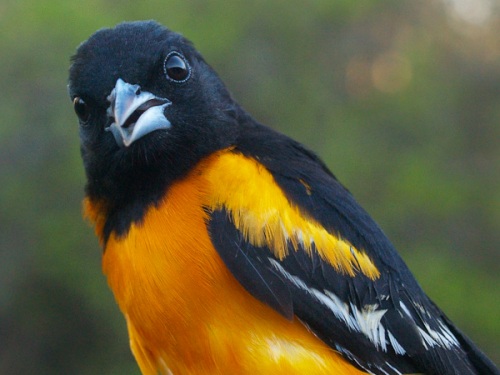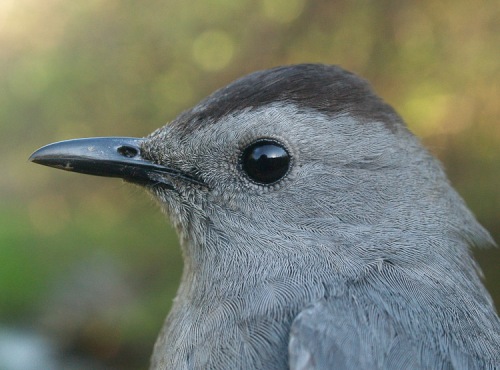|
|
THIS WEEK |
THIS SPRING |
2012 TOTAL |
SITE TOTAL |
# birds (and species) banded |
141 (22) |
315 (33) |
390 (35) |
36141 (108) |
# birds (and species) repeat |
27 (9) |
88 (11) |
102 (14) |
6515 (68) |
|
# birds (and species) return |
17 (6) |
49 (10) |
75 (10) |
1036 (38) |
|
# species observed |
88 |
107 |
108 |
205 |
|
# net hours |
408.0 |
1143.0 |
1206.8 |
60305.9 |
|
# birds banded / 100 net hours |
34.6 |
27.6 |
32.3 |
59.9 |
|
|
Note: table does not include nocturnal banding (owls) |
Banders-in-charge: Simon Duval, Gay Gruner
Assistants: Christine Barrie, Richard Beauchamp, Normand Beaudet, Nicolas Bernier, Sue Bishop, Emily Boulanger, Yolande Cossette, David Davey, Jean Demers, Tammy Elliot, Jessica Fiset, Liette Fortier, Louise Gagné, Alison Hackney, Frederic Hareau, James Junda, Lisa Keelty, Benoit Laliberté, Francine Marcoux, Benoit Piquette, Catherine Russell, Ahmad Shah, Marilou Skelling, Jane Sorensen, Patricia Stotland, Clémence Soulard, Elise Titman, Joost Valkenburg, Monique Venne
Notes: Although we lost another two days to rain this week, migration on the whole was strong. The 141 birds banded this week was well above average for this point in spring, and only barely behind the week 6 record of 148 set back in 2006. Repeats and returns were also in higher numbers than usual, and the 88 species observed this week was also a near record, just barely behind the 89 counted in 2009. The daily count peaked at 66 on May 5, an unusually early date for such high diversity. After six weeks of observation and three weeks of banding, our season totals in both categories are at near record levels, so we hope that this level of productivity continues over the final four weeks of the season.

Well, hello! Baltimore Orioles were also among the colourful influx of birds this week, and they often seem to be particularly inquisitive during the banding process.
(Photo by Simon Duval)
|
Migration took a giant leap forward this week, with 24 species observed for the first time this season. The biggest surprise was Northern Mockingbird, observed for the first time since May 2007. The others were Green Heron, Chimney Swift, Ruby-throated Hummingbird, Great Crested Flycatcher, Eastern Kingbird, Northern Rough-winged Swallow, Warbling Vireo, Blue-headed Vireo, Ovenbird, Northern Waterthrush, Tennessee Warbler, Nashville Warbler, Black-and-white Warbler, Yellow Warbler, Magnolia Warbler, Black-throated Blue Warbler, Blackpoll Warbler, Black-throated Green Warbler, Scarlet Tanager, White-crowned Sparrow, Baltimore Oriole, Bobolink, and Pine Siskin. We also banded 9 species for the first time this spring: Sharp-shinned Hawk, Yellow-bellied Sapsucker, Yellow-shafted Flicker, Blue-headed Vireo, Warbling Vireo, Nashville Warbler, Yellow Warbler, Chipping Sparrow, and Baltimore Oriole. This marks the fourth consecutive spring that we have banded a single Sharp-shinned Hawk (although of course we have four weeks remaining in which to add to the total for this year).
This week’s
top 10 [last week's rank in brackets]
#
individuals banded |
mean # individuals observed daily |
1. Red-winged Blackbird (50) [1] |
1. Canada Goose (195) [2] |
2. White-throated Sparrow (24) [3] |
2. Red-winged Blackbird (71) [1] |
3. Ruby-crowned Kinglet (19) [6] |
3. American Crow (54) [3] |
4. Common Grackle (9) [5] |
4. Black-capped chickadee (17) [7] |
5. American Goldfinch (8) [10] |
5. White-throated Sparrow (16) [5] |
6. Tree Swallow (5) [10] |
6. Common Grackle (16) [-] |
7. Nashville Warbler (3) [-] |
7. Ring-billed Gull (15) [10] |
7. Yellow Warbler (3) [-] |
8. Ruby-crowned Kinglet (14) [8] |
7. Swamp Sparrow (3) [4] |
9. Tree Swallow (14) [-] |
10. Yellow-bellied Sapsucker (2) [-] |
10. Mallard (12) [9] |
10. Warbling Vireo (2) [-] |
|
10. Yellow-rumped Warbler (2) [-] |
|
10. Chipping Sparrow (2) [-] |
|
10. Song Sparrow (2) [6] |
|
|
Our "top ten" list of birds banded this week has morphed into a top 14, thanks to a five-way tie for tenth place. Far out in front of all other species was Red-winged Blackbird, taking the top spot in week 6 for the first time since 2006. In the intervening five years, top spot was taken by Ruby-crowned Kinglet three times and White-throated Sparrow twice; these two species rounded out the top three this week. Substantially behind in fourth place was Common Grackle, which usually peaks in week 7, but is perhaps a bit early this year. American Goldfinch squeaked into the top five, as it has in four previous years. The remainder of our extended list includes three sparrows, three warblers, a woodpecker, a swallow, and a vireo. Dropping off from last week's list were Black-capped Chickadee, American Robin, and Fox Sparrow.
Among the birds observed, there was a more clear-cut top ten. Canada Goose returned to top spot this week, which is where it hsa been in week 6 every year but 2006 (when it was displaced only by a giant flight of Snow Geese). Red-winged Blackbird was the week 6 runner-up for the fourth consecutive year, followed relatively closely by American Crow. After that there was a substantial drop-off to the remaining seven species in the top ten, all of which differed only slightly in abundance. Black-capped Chickadees were more abundant than any previous year at this time, while White-throated Sparrow ranked fifth for a third week in a row, although traditionally their numbers are tapering off at MBO by week 6. The rest of the list includes a mix of common early spring species, three of which were also in the bottom half of the top ten last week (Mallard, Ring-billed Gull, and Ruby-crowned Kinglet), and two which have been around for a while already, but increased in numbers this week (Tree Swallow and Common Grackle). American Robin and Song Sparrow dropped off from last week's list. This is the third year in a row that Song Sparrow has missed the top ten in week 6, after being on the list annually for the first five years of the Spring Migration Monitoring Program.
On a closing note for this week, we have received a report from the Bird Banding Office about a Brown Thrasher that we banded at MBO as a hatch-year bird in August 2010. It was found this week in Laval, the data unfortunately available thanks to the "help" of a cat. Nevertheless, it is interesting to know that this bird completed two migration cycles, and was back within a handful of kilometres of where it was banded.
|

Although less showy than the Baltimore Orioles, Gray Catbirds return to MBO around the time, and are also welcome as a familiar sight, both as migrants and residents.
(Photo by Simon Duval)

For variety, here is an oil beetle (aka blister beetle, genus Meloe) - thanks to Nicki Fleming for assistance with identification!
(Photo by Simon Duval)
|




